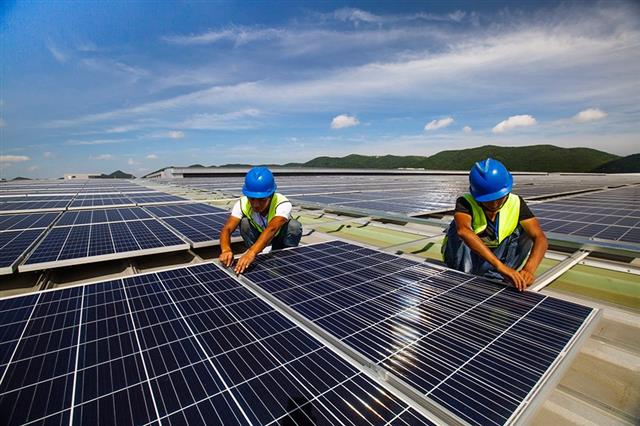Newly installed solar PV capacity in China is expected to reach over 75 GW and is likely to fall between 75 GW and 90 GW in 2022, said Wang Bohua, Honorary Chairman of China Photovoltaic Industry Association (CPIA), on the association’s Review and Outlook webinar held on Wednesday.

In 2021, China added a record 54.88 GW of solar PV installations. This year, the number is predicted to grow by 36% to 64%. The annual solar PV addictions, according to Wang, may reach 83 GW to 99 GW between 2022 and 2025.
Last year, China's solar PV industry witnessed exponential growth, with the output value of manufacturing end exceeding 750 billion yuan.
The export volume of solar PV products (silicon wafers, cells and modules) also hit a record high of more than US $28 billion.
In Wang's outlook for 2022, he believes both centralized and distributed projects will experience quick development in China.
Opprotunities abound
Xing Yiteng, Director of the New and Renewable Energy Department of China’s National Energy Administration (NEA), said at the webinar that at present, the first batch of 100 GW large-scale wind and solar projects are under construction in desert areas.
Without harming the local ecology, the projects will rely on existing transmission lines and peak shaving measures.
Last year, China started the county-level trials of distributed solar installations. So far, 676 counties in 31 provinces have applied to roll out the project.
Data shows that 29.28 GW of distributed solar was installed in 2021, accounting for about 55% of the total newly installed capacity, surpassing the capacity of centralized projects for the first time in history.
The total installed capacity of distributed projects has exceeded 100 GW, accounting for about one third of the total solar installed capacity.
The National Development and Reform Commission and other three ministries and commissions proposed that by 2025, solar PV coverage on the rooftops of public institutions should reach 50%.
Challenges persist
However, "the solar industry are still faced with many challenges in the future,” said Xing.
He added that, “the manufacturing end is still lack of coordination and stability, driving up the prices of the solar value chain, which has affected the installation of solar PV projects to a certain extent.”
Wang Bohua said that, since the second half of 2020 when the pandemic eased off, market demand has rebounded. This has led to the quick expansion of production capacity of downstream enterprises that have huge demand for polysilicon.
Although silicon manufacturers like Tongwei, GCL, Asia silicon, Xinte, Daqo have expanded production in 2020 after the price rise, the added capacity can only start producing at the end of 2021 or in 2022 due to the long production expansion cycle. The unbalance between supply and demand is the major reason behind the soaring prices.
Solar project development is also faced with many problems.
The mandatory requirement of storage facilities in solar PV projects and high land costs are still restricting the development of the industry.
Besides, as counties roll out solar PV deployments on rooftops, some have violated market-oriented principles by designating the projects to specific developers and arbitrarily attaching additional conditions.


